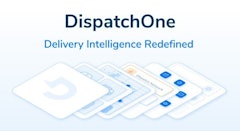
Navigating the complexities of the modern supply chain often feels like walking a tightrope. While businesses remain focused on core competencies, the pressing question becomes whether success is driven more by cutting-edge technology or by building a strong, capable team. The answer is not as simple as you might think.
Supply chain management today is a hybrid discipline. While digital platforms offer real-time visibility and unmatched speed, human expertise remains essential for adapting to change, solving unexpected problems and building the kinds of relationships that technology alone cannot replicate.
Striking a balance between human expertise and digital platforms is essential for any company that wants to deliver real value in today’s complex logistics environment. A resilient and efficient supply chain requires both the precision of automation and the judgment of experience.
People run business: The enduring value of human expertise
Despite the rise of AI and automation, people continue to be the engine that powers successful supply chains. Technology may enhance speed and consistency, but people bring strategy, empathy and adaptability to the table.
Custom solutions do not come from software alone. They are shaped by individuals who take the time to understand the unique needs, constraints and goals of a business. From front-line coordinators to executive-level strategists, people remain indispensable.
Routing centers and control towers exemplify this value. Staffed by seasoned professionals, these hubs monitor shipments to anticipate disruptions and take action before a problem arises. Algorithms can predict weather or traffic delays, but only people can decide how to respond in the context of business priorities.
Dedicated support teams are equally crucial. These are professionals who know your business intimately — not just your account number. They offer guidance tailored to your operational history, customer expectations and long-term goals.
Implementation processes are another area where human insight is key. A successful technology rollout depends on understanding where a company thrives, where it struggles and how to align new systems with existing workflows. Without a strategic, human-led approach, even the best software can fall flat.
And when the unexpected happens — which it often does in logistics — it is human creativity and improvisation that provide immediate, effective responses. Technology follows logic. People think outside of it.
People bring the judgment, creativity and relationship-building that technology can’t replicate. They’re the ones who recognize patterns, see around corners and act decisively when the unexpected happens.
The value of human relationships should not be overlooked. Business development still happens face to face — at conferences, tradeshows and networking events. Trust is built over time through real conversations, and these relationships are often the foundation of long-term success.
Technology pushes the goal post: The power of innovation
While people define strategy and solve problems, technology is what allows supply chains to scale and compete. Innovations such as transportation management systems (TMS), warehouse management systems (WMS) and GPS tracking have revolutionized how goods move and how data is used.
A robust TMS simplifies and centralizes the core functions of logistics. It enables faster quoting, optimized routing, real-time tracking, efficient execution and comprehensive reporting, all from a single interface. These systems reduce manual tasks and streamline communication, saving time and reducing errors.
WMS platforms, particularly when integrated with enterprise resource planning (ERP) systems, offer complete inventory visibility. They allow for smarter forecasting, reduced waste and improved fulfillment rates — outcomes that drive both customer satisfaction and profitability.
Real-time reporting tools give clients and team members immediate access to actionable insights. These tools drastically improve operational efficiency, enable better forecasting and elevate the overall service experience.
Technology also plays a critical role in automation. By handling repetitive tasks such as invoice generation, inventory reconciliation or status updates, digital tools free up employees to focus on higher-value work. This shift not only increases efficiency but also improves job satisfaction and retention.
Security is another major advantage. With GPS tracking and modern cargo protection technologies, companies gain real-time insights into shipment status. These tools offer alerts for delays, theft risks or weather-related issues, enabling faster, more informed decision-making.
People-centric, tech-enabled: Why integration is key
The most successful supply chains do not treat people and technology as competing priorities. Instead, they focus on creating a symbiotic relationship where each supports the other.
Artificial intelligence and machine learning can handle large volumes of repetitive data processing, such as analyzing shipment trends or identifying anomalies. This reduces the burden on human workers and allows them to focus on strategic planning and customer care. Technology gives speed, accuracy and scale. It allows companies to integrate seamlessly with clients, provide real-time visibility and automate routine processes. But technology alone isn’t enough.
Data is only valuable when it is acted upon. For example, customer service teams can use insights from TMS platforms to notify vendors of changes, delays or risks in real time. This is proactive service, powered by technology but delivered with empathy and it builds customer loyalty.
On the flip side, overreliance on technology introduces its own risks. Systems can be hacked, manipulated or simply fail. Human oversight remains essential, particularly when dealing with sensitive information, compliance issues or high-value cargo.
Physical tasks, too, often require human intervention. Loading, inspection and other hands-on responsibilities involve safety considerations that technology alone cannot address. Human judgment remains irreplaceable in these scenarios.
Moreover, all technology requires maintenance. Developers, analysts and IT professionals are critical to keeping systems secure, scalable and aligned with evolving business needs. Investment in people is what keeps your technology investment working.
It all comes down to need
Ultimately, the right balance of people and platforms depends on a company’s goals, infrastructure and scale. There is no universal formula. However, one fundamental truth remains: Technology without people is limited. People without technology are inefficient.
When you combine the insight of people with smart, adaptable digital tools, you get a level of service that’s proactive, personalized and resilient. It is not about choosing sides; it is about building an ecosystem where tech empowers human talent, and human talent maximizes the potential of tech.



















